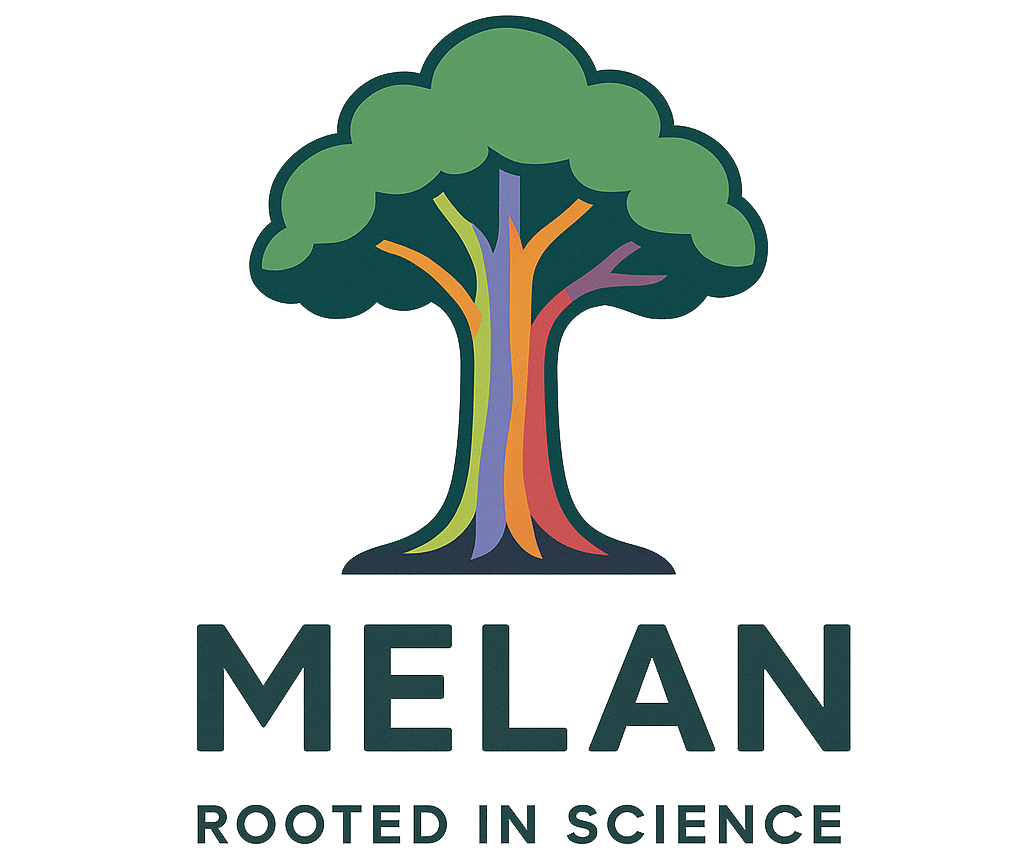Artificial Intelligence in Everyday Life
Artificial Intelligence, or AI, refers to computer systems designed to perform tasks that normally require human intelligence. These tasks include recognizing images, understanding speech, making decisions, and learning from experience. AI is already part of your daily life. It powers voice assistants, search engines, recommendation systems, and more. But despite its prevalence, AI is often misunderstood. It is not a form of consciousness or self-awareness, but rather a set of techniques that enable machines to behave intelligently within specific domains.
Historical Context
AI research emerged in the 1950s with early symbolic logic systems, notably at the Dartmouth Summer Research Project (McCarthy et al., 1956). During the 1970s and 1980s, expert systems gained traction but failed to scale. The modern AI resurgence began in the 2010s, enabled by deep learning and accessible data, with landmark moments including ImageNet (2012), AlphaGo (2016), and ChatGPT (2022). These shifts reflect how algorithmic breakthroughs and computational scale drive AI advancement.
Core Capabilities of AI
AI systems simulate human cognitive tasks by leveraging data, pattern recognition, and statistical inference. These capabilities enable machines to perform functions such as perception, learning, reasoning, language understanding, and decision-making. Each capability represents a distinct functional domain within AI architecture and underpins specific applications in industry, science, and consumer technology.
Perception
AI enables machines to interpret and process sensory data, particularly in vision and audio domains. In computer vision, AI systems identify objects, faces, or environmental features by analyzing image data using convolutional neural networks (CNNs). In speech recognition, systems like Whisper convert spoken language into structured text, achieving human-level accuracy in controlled settings (Radford et al., 2022). These abilities are foundational to autonomous vehicles, medical imaging, and surveillance systems.
Learning
AI systems learn from data by identifying statistical patterns, enabling adaptation without explicit programming. The most widely used learning paradigm is machine learning (ML), which improves system performance through exposure to labeled (supervised) or unlabeled (unsupervised) datasets. Reinforcement learning further refines behavior by maximizing rewards in dynamic environments. This capability drives predictive analytics, fraud detection, and content recommendation systems (LeCun et al., 2015).
Reasoning
Reasoning in AI refers to the system’s ability to apply logic or learned strategies to solve problems or make decisions. While less flexible than human cognition, rule-based and probabilistic reasoning systems excel in structured tasks like route optimization, diagnostics, and decision support. Hybrid systems that combine logic with data-driven inference are increasingly applied in fields like supply chain planning and automated legal reasoning (Russell & Norvig, 2020).
Language
AI systems process and generate human language using natural language processing (NLP) techniques. Language models such as GPT-4 understand, interpret, and produce text by learning from vast corpora of written content. Tasks include summarization, translation, and dialogue. These models rely on transformer architectures, which enable contextual understanding and response generation at scale (Vaswani et al., 2017). NLP is central to search engines, chatbots, and assistive technologies.
Action
Action in AI refers to an agent’s ability to make decisions and interact with its environment. In robotics and autonomous systems, action-driven AI uses real-time sensor data and learned models to navigate, manipulate, or engage with physical environments. For example, autonomous drones use visual and spatial inputs to map terrain and avoid collisions. These systems often combine perception, learning, and planning to achieve task-oriented goals.
Types of AI
AI systems are classified based on their generality and capacity to transfer learning. The main categories include Narrow AI, which is task-specific; General AI, which remains theoretical but aspires to human-like adaptability; and Superintelligent AI, a speculative category that would surpass all human intellectual capacities. These distinctions guide expectations for capability, safety, and ethical oversight.
Narrow AI (Weak AI)
Narrow AI systems are built to perform specific tasks and do not possess general reasoning or transfer capabilities. Examples include facial recognition tools, medical diagnosis systems, and language translators. These systems dominate current AI deployments across sectors but are limited by domain-specific training data and a lack of contextual awareness. They cannot apply knowledge from one domain to another without retraining.
General AI (Strong AI)
General AI refers to systems capable of understanding, learning, and applying knowledge across diverse domains. It remains theoretical and is the focus of ongoing research in areas such as meta-learning, neurosymbolic architectures, and cognitive modeling. General AI would match or exceed human performance in reasoning, abstraction, and social intelligence but currently lacks any working implementation or prototype.
Superintelligent AI
Superintelligent AI describes a hypothetical system that would outperform the best human minds in every domain, including creativity, wisdom, and problem-solving. While it does not yet exist, its potential implications positive and existentially risky are debated by AI safety researchers and ethicists. Its emergence, if possible, would require breakthroughs far beyond current architectures.
Key Techniques Behind AI
Modern AI is enabled by several foundational methodologies: machine learning, deep learning, symbolic AI, and hybrid models. These techniques vary in approach some are data-driven, while others are rule-based but all contribute to AI’s ability to process information and automate complex tasks.
Machine Learning (ML)
Machine learning allows systems to improve from experience by identifying correlations and patterns in data. It encompasses supervised learning such as classification, unsupervised learning via clustering, and reinforcement learning or dynamic environments. Algorithms such as decision trees, support vector machines, and ensemble models are common. ML is the engine behind recommendation engines, predictive maintenance, and personalized medicine.
Deep Learning
Deep learning is a machine learning subfield that employs multi-layered neural networks to model complex functions. It excels at high-dimensional data tasks like image recognition, speech processing, and natural language understanding. However, deep learning models are often opaque functioning as “black boxes” and require extensive data and compute resources to train effectively (LeCun et al., 2015; Doshi-Velez & Kim, 2017).
Symbolic AI
Symbolic AI refers to systems that use logic-based reasoning and rule sets to encode expert knowledge. These systems are interpretable and effective in domains requiring clear constraints and explicit structure, such as legal reasoning or formal planning. Though overshadowed by statistical learning in recent years, symbolic AI offers advantages in transparency and auditability.
Hybrid Approaches
Hybrid AI combines symbolic and statistical methods to leverage the interpretability of rules with the adaptability of learning. For example, neurosymbolic systems integrate neural perception with logical inference. This approach is promising for areas requiring both explainability and flexibility, such as scientific discovery and trustworthy AI systems.
Applications of AI
AI is already integrated into core sectors of the global economy, performing specialized tasks with increasing efficiency. Its applications span consumer technology, healthcare, finance, transportation, and creative domains. Despite widespread deployment, these systems often rely on vast amounts of data and lack robustness when facing unfamiliar or out-of-distribution scenarios (Geirhos et al., 2020).
Consumer Technology
AI powers everyday consumer experiences through personalization, automation, and interaction. Voice assistants like Siri and Alexa rely on natural language processing to understand and respond to spoken commands. Recommendation engines on platforms such as Netflix and YouTube use machine learning to analyze user behavior and predict preferences. Email providers use AI-driven spam filters that adapt to evolving threats in real time.
Healthcare
AI in healthcare enhances diagnostic accuracy, predictive modeling, and treatment planning. Convolutional neural networks are used to identify anomalies in radiological images, sometimes surpassing human performance in controlled trials (Esteva et al., 2017). Machine learning algorithms predict disease progression, identify at-risk patients, and accelerate drug discovery by modeling molecular interactions. These tools augment, but do not replace, clinical expertise.
Finance
AI models in finance automate tasks involving pattern recognition and risk assessment. Credit scoring systems evaluate borrower risk using predictive analytics, while fraud detection algorithms flag unusual transactions using real-time anomaly detection. Algorithmic trading platforms use reinforcement learning to optimize buy-sell strategies based on market dynamics. These systems improve efficiency but can amplify volatility when deployed at scale.
Transportation
AI transforms mobility by enabling autonomous perception and decision-making. Self-driving cars process visual and spatial data to navigate roads, identify hazards, and follow traffic rules. AI is also used in fleet management, predictive maintenance, and route optimization for logistics. These systems combine perception, planning, and control modules, yet still struggle under rare or ambiguous conditions (Waymo Safety Report, 2021).
Language and Creativity
AI models generate and interpret human language and creative content. Language models like GPT-4 summarize texts, answer queries, and engage in coherent dialogue by leveraging massive text corpora. In creative fields, AI composes music, produces digital art, and even assists in scriptwriting or coding. While output quality is improving, these systems often hallucinate facts or mimic stylistic patterns without true comprehension (Ji et al., 2023).
Limitations and Risks
Despite AI’s progress, key technical, ethical, and societal limitations constrain its effectiveness and safe deployment. These include bias, opacity, fragility, hallucination, and unequal access. Each risk is systemic and persists due to technological constraints, market forces, and uneven regulation. Addressing these issues is now central to policy, compliance, and enterprise governance efforts.
Bias and Fairness
AI systems inherit and often amplify biases embedded in historical data, leading to discriminatory outcomes in high-stakes domains. In a 2019 Time Magazine report, computer scientist Joy Buolamwini revealed that commercial facial recognition systems had error rates of up to 35% for dark-skinned women, compared to under 1% for light-skinned men. This research catalyzed public awareness and policy debates. While AI organizations face regulatory pressure from policies like the EU AI Act, internal reforms remain inconsistent. Public outcry and reputational risk are major drivers of AI policy changes, particularly in tech and government. Businesses recognize that algorithmic discrimination reduces trust, limits market access, and increases litigation risk. Tools for bias auditing and debiasing have improved, but adoption varies by sector and geography.
Lack of Transparency
Many modern AI models are opaque, with decision logic that cannot be easily interpreted a significant issue in healthcare, finance, and law. Deep learning architectures with millions of parameters create what researchers call “black boxes” (Doshi-Velez & Kim, 2017). Regulatory and legal pressure (e.g., GDPR’s right to explanation) has prompted some firms to invest in Explainable AI (XAI). However, strategic adoption is hindered by technical limitations and fears of exposing proprietary IP. Public and institutional stakeholders demand interpretability, but trade-offs with performance and IP protection remain unresolved.
Data Dependence and Resource Inequality
High-performing AI models require vast datasets and compute infrastructure. For example, OpenAI’s GPT-3 was trained on hundreds of GPUs and billions of tokens (Brown et al., 2020). This concentration of resources gives large firms disproportionate control over model development. Market concentration and lack of open access have become a reputational and innovation risk. Some governments and nonprofits are responding with open models and datasets, but disparities persist. The structural imbalance affects global equity in AI and limits the diversity of applications and voices in the development pipeline.
Robustness and Adversarial Vulnerability
AI systems are not reliably robust. Minor, intentional changes to inputs called adversarial attacks can trigger critical misclassifications. In some settings, these attacks succeed over 90% of the time (Papernot et al., 2015). In safety-critical domains like autonomous vehicles or biometric security, this poses severe operational and liability risks. Regulatory attention has increased following high-profile failures, and technical defenses are being researched. However, no universal solution exists, and attackers often adapt faster than defenses. This is a key area of concern for both regulators and insurers.
Hallucinations in Generative Models
Large language models like GPT-4 can generate plausible-sounding but factually incorrect content commonly referred to as “hallucinations.” These false outputs include made-up citations or misleading summaries (OpenAI, 2023; Ji et al., 2023). In sectors like healthcare, legal services, and journalism, this limits safe deployment. Pressure from industry and academia is pushing for stronger grounding techniques and fact-checking systems. However, hallucinations stem from the core design of language models, which optimize for fluency, not truth. Stakeholders must weigh utility against accuracy when considering integration.
Explainable AI Limitations
Efforts to make AI models explainable remain technically and operationally inconsistent. Methods like LIME and SHAP can approximate model reasoning, but they often fail under scrutiny or can be manipulated (Lipton, 2016; Ribeiro et al., 2016). Regulatory demand for transparency is rising, especially in high-risk use cases. However, organizations face a tension between offering interpretability and protecting trade secrets or model security. As of now, there is no industry consensus on explainability standards, which leaves many firms in regulatory limbo or legal exposure.
AI in the Not Too Distant Future
AI is expected to become more adaptable, transparent, and reliable over the next decade. Research is focused on addressing current limitations, especially explainability, robustness, value alignment, and generalization. These efforts are driven by technical necessity, rising regulatory expectations, and strategic demands from industry and civil society. While transformative progress is underway, most improvements will come incrementally, not through general intelligence breakthroughs.
Improving Safety and Reliability in Real-World Environments
Improving AI robustness and safety is a top priority for researchers and risk managers. Robust systems maintain performance in the face of input noise, distribution shifts, and adversarial manipulation. Techniques like adversarial training, out-of-distribution detection, and certified defenses are actively being developed. Safety concerns are amplified in sectors like transportation, defense, and healthcare, where errors can lead to catastrophic outcomes. Regulatory frameworks and national AI safety initiatives such as those from NIST and OECD are beginning to mandate robustness testing. Still, there is no consensus on what constitutes “sufficient” robustness across use cases.
Aligning AI with Human Intentions
AI alignment refers to ensuring that a system’s goals match human values and intentions. While alignment is often discussed in the context of future general AI, it also applies to current systems that exhibit unpredictable behavior. Misalignment can occur through poor objective design, data bias, or unintended incentives in reinforcement learning. Organizations like OpenAI, Anthropic, and DeepMind have internal research agendas dedicated to alignment. Governments are also funding alignment research to preempt social and ethical risks. While progress is being made, alignment remains a foundational problem without a scalable solution.
How AI Is Learning to Generalize Across Tasks
Future AI systems must generalize better across tasks and data distributions to reduce dependence on narrow training contexts. Current models often overfit to the data they were trained on, performing poorly in new or complex environments (Geirhos et al., 2020). Research in meta-learning, transfer learning, and few-shot adaptation is addressing this gap. Multimodal models like GPT-4 with vision represent progress toward broader generalization. However, robust generalization across languages, cultures, or edge cases is still a work in progress. Technical constraints, such as dataset bias and computational cost, remain key obstacles.
Conclusion
Artificial Intelligence is a collection of methods enabling machines to perform tasks once thought exclusive to human intelligence. Most AI today is narrow, task-specific, and dependent on data. It is a powerful tool capable of both enormous benefit and potential harm. Understanding how it works, where it fails, and how it is governed is essential for using it responsibly. AI is here, and shaping the future demands both technical insight and ethical foresight.






